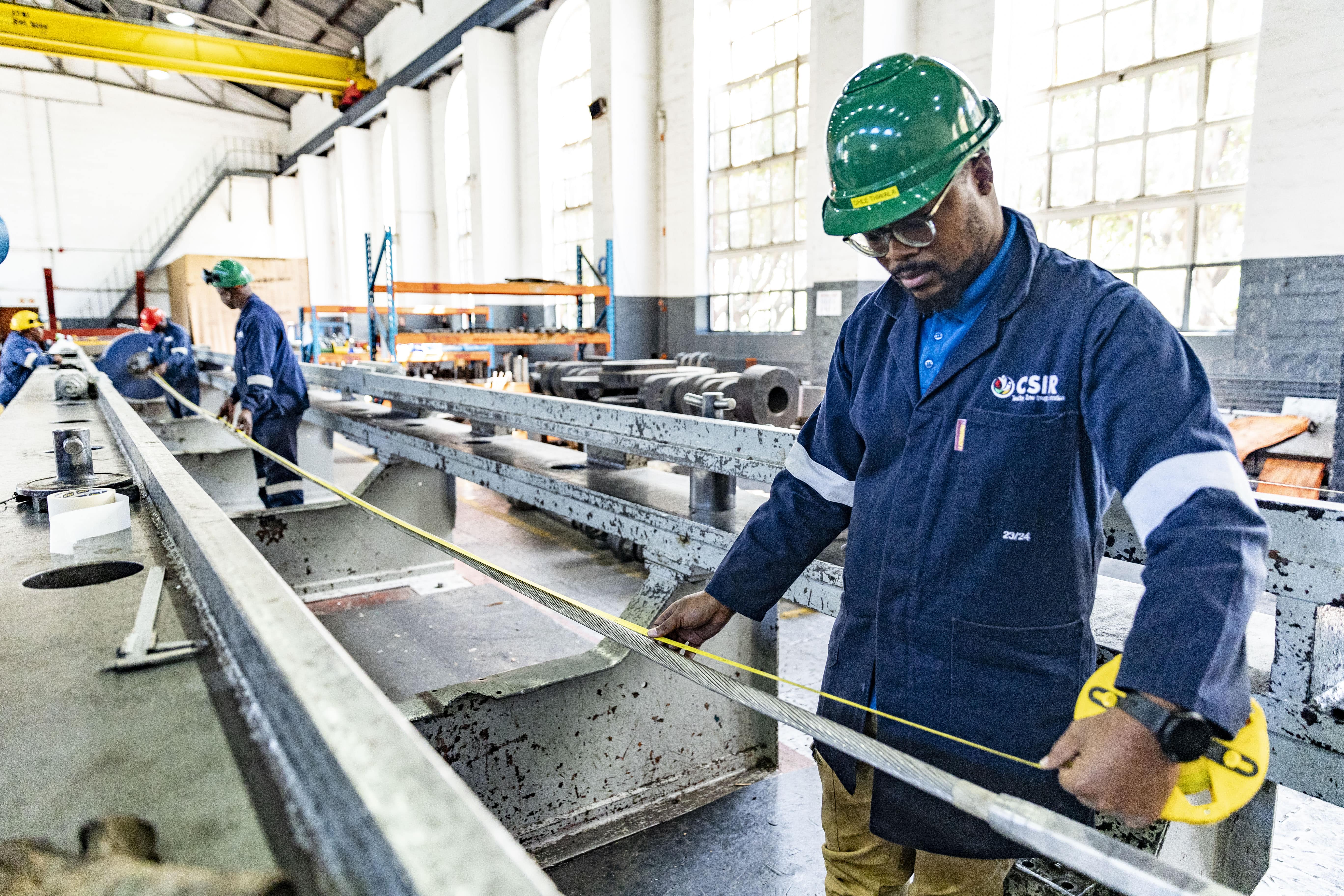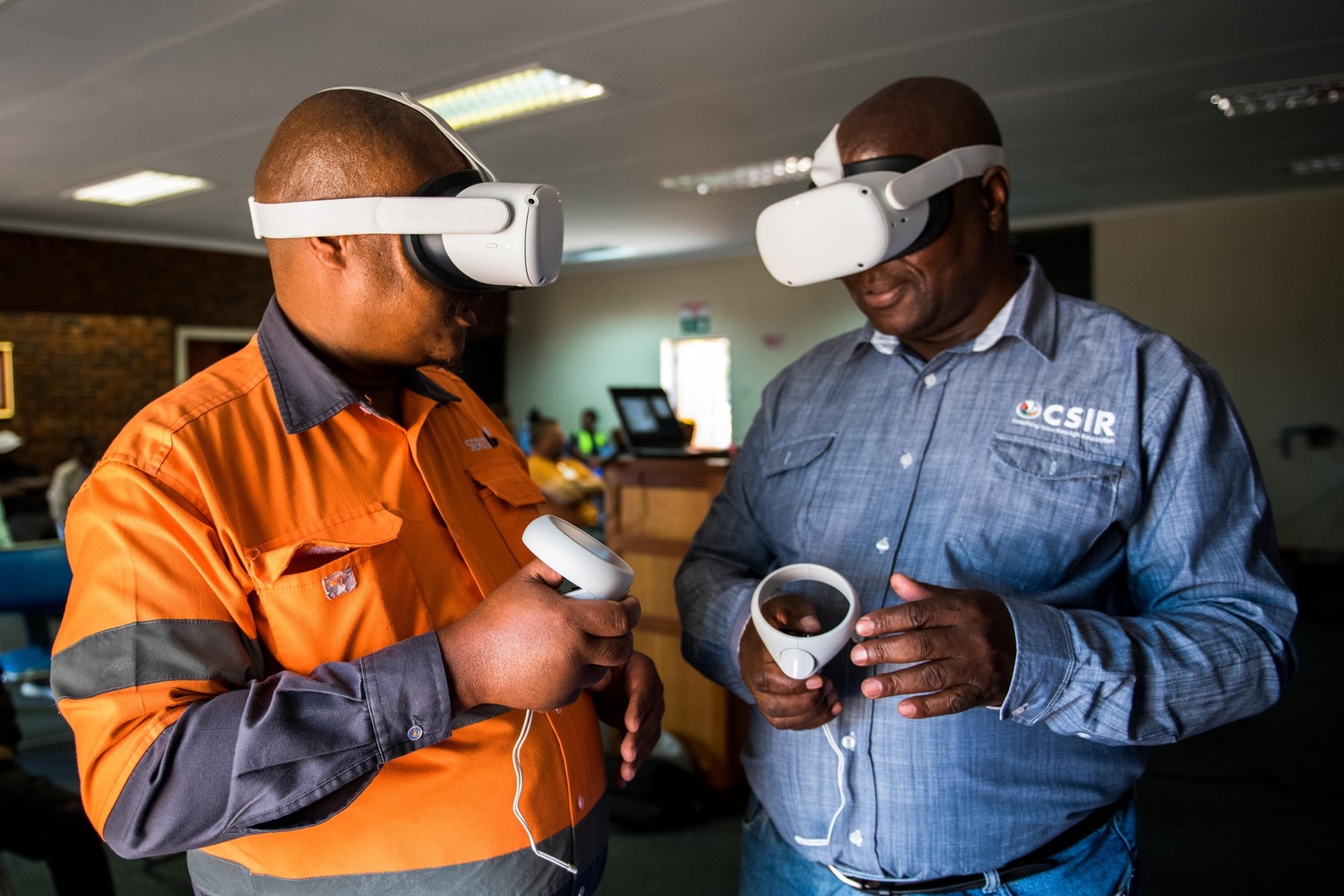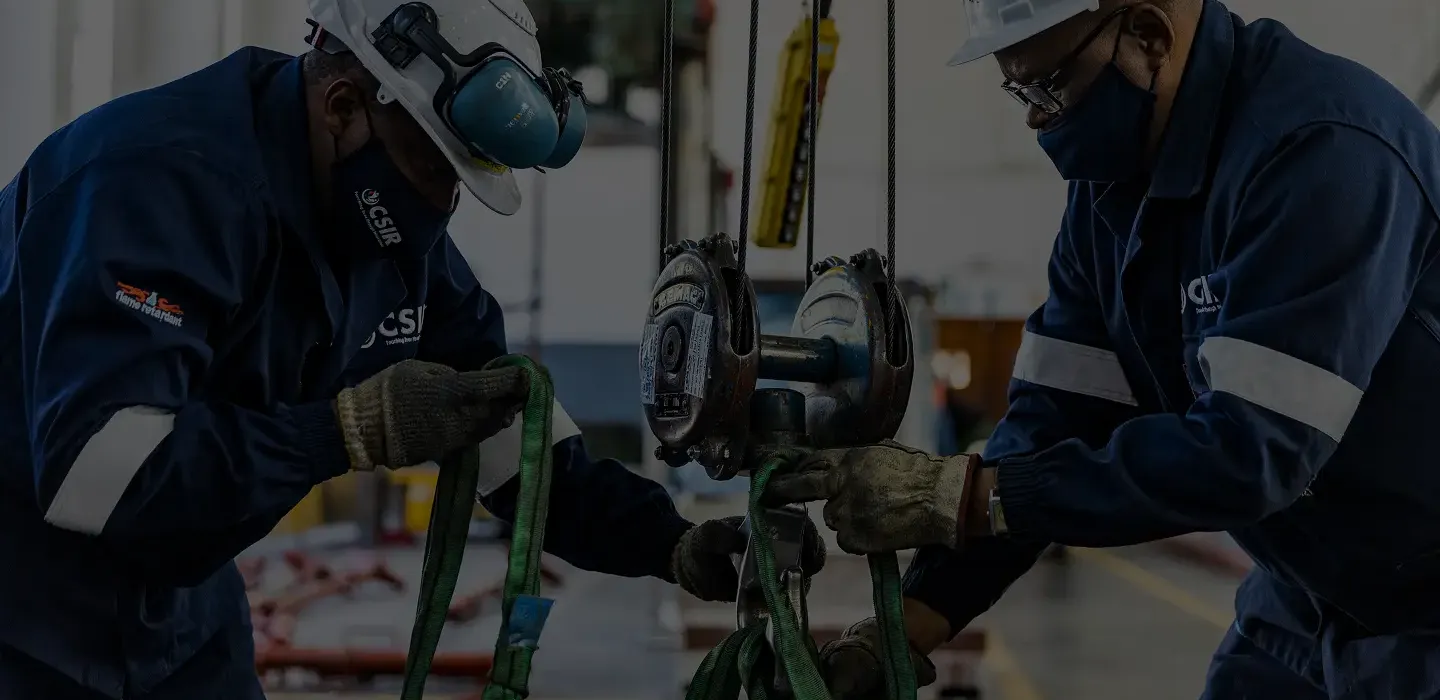What we do
What’s new?

CSIR marks 90 years of excellence in mechanical testing and safety solutions
The CSIR Mechanical laboratory is uniquely positioned to provide support for the mining industry with its testing and inspection services. Established as the Government Mechanical Laboratory by the Department of
Mines in 1935, the laboratory offers 90 years of experience in superior testing facilities, targeted at safety in critical lifting and hoisting equipment, as well as support with mine products for South Africa’s
deep and ultra-deep underground mines. The CSIR has been the proud custodian of this national asset since the mid-1960s and continues to provide expert mechanical testing services that contribute to worker safety
and regulatory compliance in the mining industry and other industries.
The CSIR Mechanical laboratory offers an independent and objective testing service to the industry with a niche capability to test large items. This service includes proof load tests carried out on new and
refurbished products, such as lifting and hoisting equipment. This rigorous process aims to confirm structural integrity and load-carrying capacity before these items are released into service. The mechanical
properties of materials and the ultimate strength and modes of failure of products can be determined through destructive testing. The performance and behavior of items such as load cells and hydraulic jacks, and
cylinders can be evaluated under application of prescribed loads.
Albeit heavily applicable to the mining industry, the specialised services offered by the CSIR Mechanical laboratory apply to various industries across the country, including civil construction, road and rail
transport, and power distribution. Users from the mining industry include the manufacturers of lifting and hoisting equipment and mine support products, as well as the end-users of these items.
The collaborative approach of the laboratory and the availability of complementary capabilities in the rest of the CSIR positions the Mechanical laboratory as a capable partner in addressing distinctive and
challenging testing requirements of our clients. This includes investigating and recreating mechanical failures of equipment, which can provide valuable insights during product development or as part of failure
incident investigations.
Testing services are offered at the CSIR Mining Laboratories located in Johannesburg. A team of capable CSIR personnel working in the mMchanical laboratory receives test requests and items for testing on a daily
basis. The laboratory is equipped to carry out tensile testing in the force range 1 to 1500 tons (10 to 15,000 kN) and can accommodate test items up to 25 m in length. In compression testing, the laboratory can
handle test items up to 4m2 footprint and 4.5m in length, while applying compressive loads up to 1000 tons (10,000 kN).

VR-enabled competency based training
The flagship innovation on show at the DTI/CSIR/MMP stand at the Mining Indaba involved highly successful work being done on VR-enabled competency based safety training. “This programme originated from our
existing and long-standing safety awareness training for mineworkers. We present these courses on a weekly basis at our Kloppersbos fire and explosion testing, training and R&D facility,” Bergh tells MechChem
Africa. “There we can create full scale coal-dust explosions and we have long used this capability to present safety awareness training.
“But we needed to take it a step further. Large explosions are rare nowadays, but underground fires are not. Fires create non-respirable atmospheres, where people cannot breathe due to toxic gases,
carbon-monoxide or fumes from burning plastics and rubbers. So we have produced a number of innovations, most notably, in the field of self-rescuer devices, which are now being made by local and international
manufacturers. But the specific training gap that we saw was to provide a much better basis for training miners how to respond confidently and effectively in an emergency such as a fire. Hence the shift to
competency-based safety training,” says Riaan Bergh.
“This is where virtual reality comes in. If you put a person in front of a training facilitator and show them how to use a self-rescuer, they might pay partial attention. But if you put a VR-headset onto the
person while simulating an emergency scenario, the emotions start to flow very quickly. So we create actual underground emergency scenarios that help psycho-emotional responses to kick in, which we use to ensure
trainees keep cool heads and make the right decisions while being challenged by the high-pressure VR experience,” he says.
Competence involves the ability to recall and apply the knowledge learned in real emergency situations. But it also enables mine operators to develop and test their response plans to emergency scenarios. What
immediate action needs to be taken and how to mitigate the harm done in the event of different emergency situations. “It is fast becoming the tool for developing execution strategies to mitigate against harm,” he
says.
Expectation management and confidence
“The physical donning (the deploying of the self-rescuer) needs to be embedded into muscle memory so that users develop unconscious competence. They need to learn through motion, so they can do it quickly and
correctly when their lives really are in danger,” Bergh continues.
CSIR’s competence training approach also involves expectation management. “The chemical reaction involved to produce the oxygen in a self-rescuer is exothermic, so a short while after the mouthpiece is put on,
the air being breathed is going to feel hot, at around 50° C. In addition, the breathing resistance is higher. This can lead to confusion and panic, people removing the mouthpiece and running to the refuge
chamber: a wrong and very dangerous response!
“So we have just developed and patented a small training device called the Expectation Trainer that enables people to experience what it feels like to use a self-rescuer, in terms of the elevated temperature and
the additional breathing resistance. It makes the reasons for modulating exertion far more obvious: walk do not run, for example, so that the rate at which oxygen supplied will be sufficient,” he informs
MechChem Africa.
Also, some mines are starting to use their end-of-life units as an additional training tool to give people a real experience of what it feels like to wear and use one. “These are single use devices, though,
whereas our Expectation Trainer can easily be disinfected and used again – and they are much less expensive than a complete functioning self-rescuer device, so a mine’s whole workforce can be put through
expectation training,” he says.
The last aspect of CSIR’s competency based training is putting all of the developed competencies together in a realistic environment: “We take trainees into a mock up mine and create an emergency scenario. The
lights go out, we blow in smoke and blast disaster-type noises through a sound system, for example. The trainees then need to open and put on their self-rescuers and follow the lifeline to the refuge chamber, all
without panic and while doing all the necessary safety checks. Successful completion of the ‘escape’ suggests that the trainee is safety competent and has a good chance of surviving a real emergency,” says Bergh.
The digital twin for trackless mobile machines
Another innovation on show was a digital twin development for collision prevention of trackless mobile machinery (TMM): “In the virtual environment on a cloud platform, we are able to recreate a digital twin of a
mine’s whole operations with respect to traffic flow. The system looks at how vehicles move around a mine and, most importantly, how they interact with each other,” Bergh explains. The initial motivation for the
system was driven by transport-related accidents, hence Chapter Eight Regulations of the Mine Health and Safety Act, which states that wherever there is a significant risk of collision, mine vehicles needs to be
fitted with a fail-safe machine intervention system that can slow and stop the vehicle autonomously (as per Level-9 of Earth Moving Machine Safety Round Table’s defensive layers of control).
To install this system on all the vehicles in a mine is prohibitively expensive, though. “So the digital twin was developed to assist in quantifying collision risks, non-conformances, and identifying vehicles
most at risk. The system collects actual GPS data from mobile machines and uses numerical models and machine learning to model the movement of the vehicles and derive vehicle-interactions and non-conformance
insights, helping mine operators to make informed choices about risk mitigation and/or accurately identifying which vehicles need Level-9 intervention technology,” he says.
“Also, though, it quickly became clear that we could also use the system as a productivity optimisation tool, because in the same way as you can model risk outcomes, we can also optimise traffic management, say,
by monitoring speed, route, or dispatching parameters, for example. By doing so, we can see which scenario gives the best productivity outcome for the whole system, so instead of simply identifying collision-risk
vehicles, we are able to optimise operations for a mine’s entire mobile vehicle fleet,” Bergh tells MechChem Africa.
Bergh went on to describe another digital solution being developed for Industry, which consists of a platform that will run a number of applications aimed specifically to assist rock engineering practitioners.
“This solution originates from one of our own rock engineers with inside knowledge of the difficulties involved with implementing rock engineering related practices on the mines”
Our Research
Lorem ipsum dolor sit amet, consectetur adipiscing elit in laoreet ornare ipsum. Dolor sit amet, consectetur adipiscing elit in laoreet ornare adipiscing elit in laoreet ornare ipsum.
Contact information:
Our facilities
Lorem ipsum dolor sit amet, consectetur adipiscing elit in laoreet ornare ipsum. Dolor sit amet, consectetur adipiscing elit in laoreet ornare adipiscing elit in laoreet ornare ipsum.
National Programmes
Lorem ipsum dolor sit amet, consectetur adipiscing elit, sed do eiusmod tempor incididunt ut labore et dolore magna aliqua. Ut enim ad minim veniam, quis nostrud exercitation ullamco laboris nisi ut aliquip ex ea commodo consequat. Duis aute irure dolor in reprehenderit in voluptate velit esse cillum dolore eu fugiat nulla pariatur.
